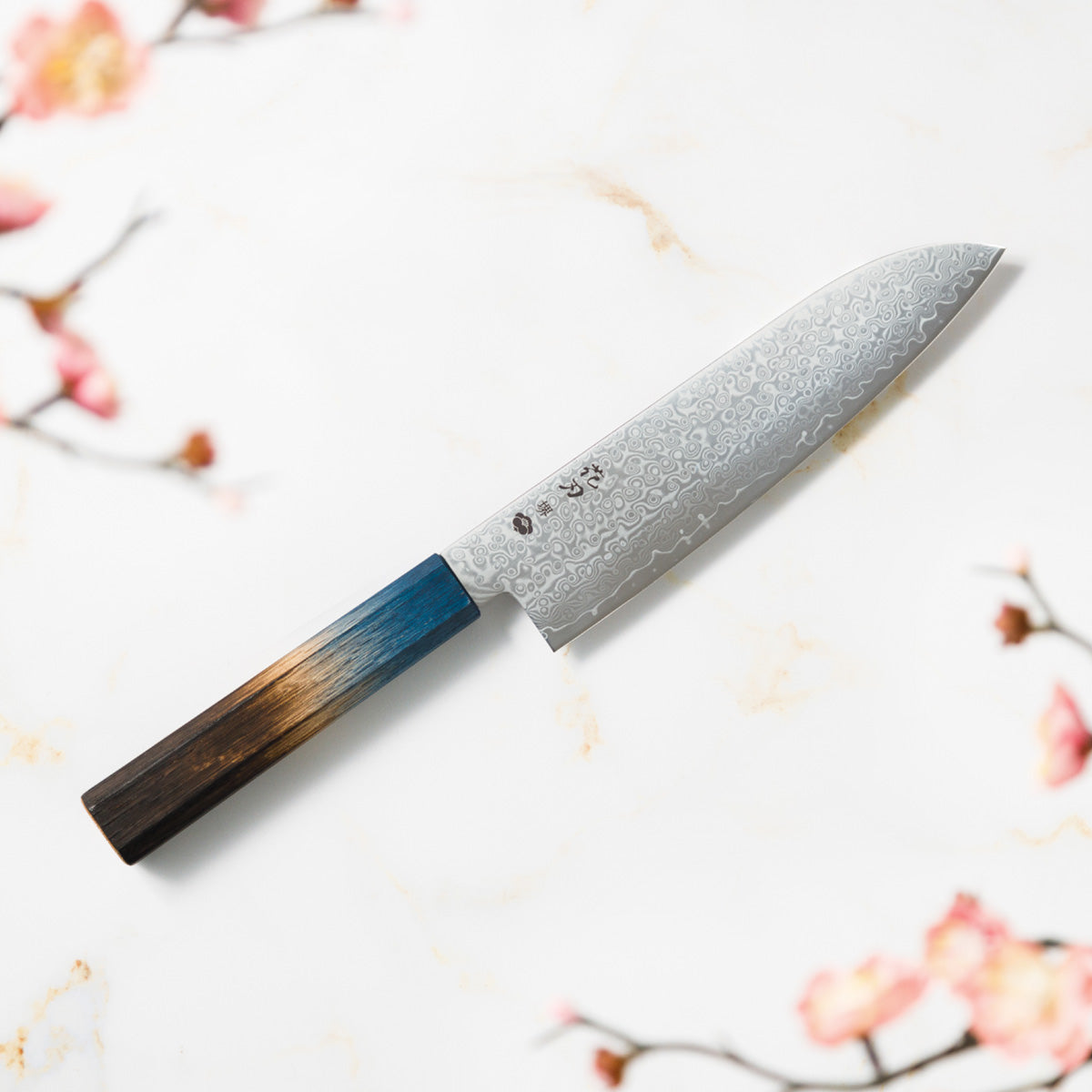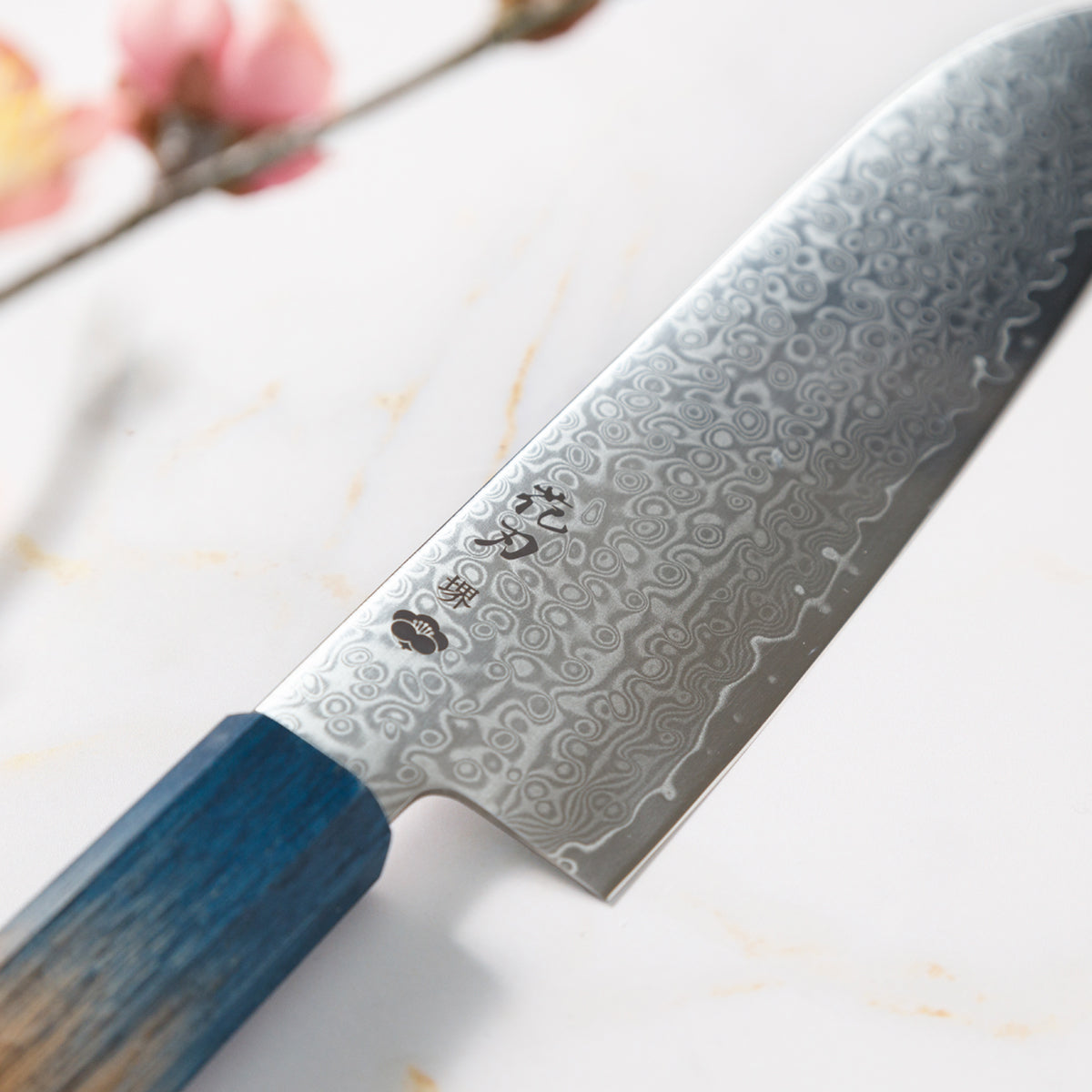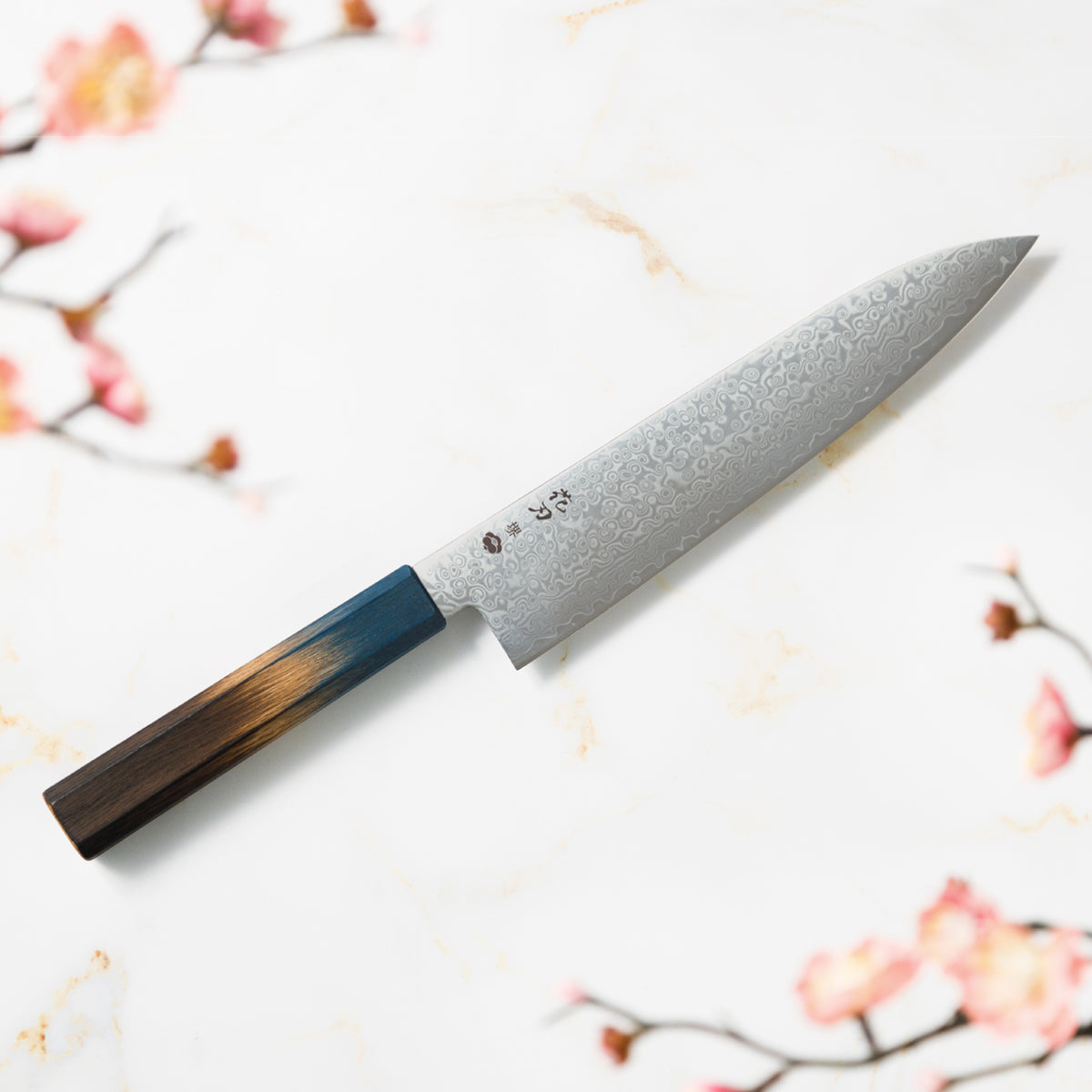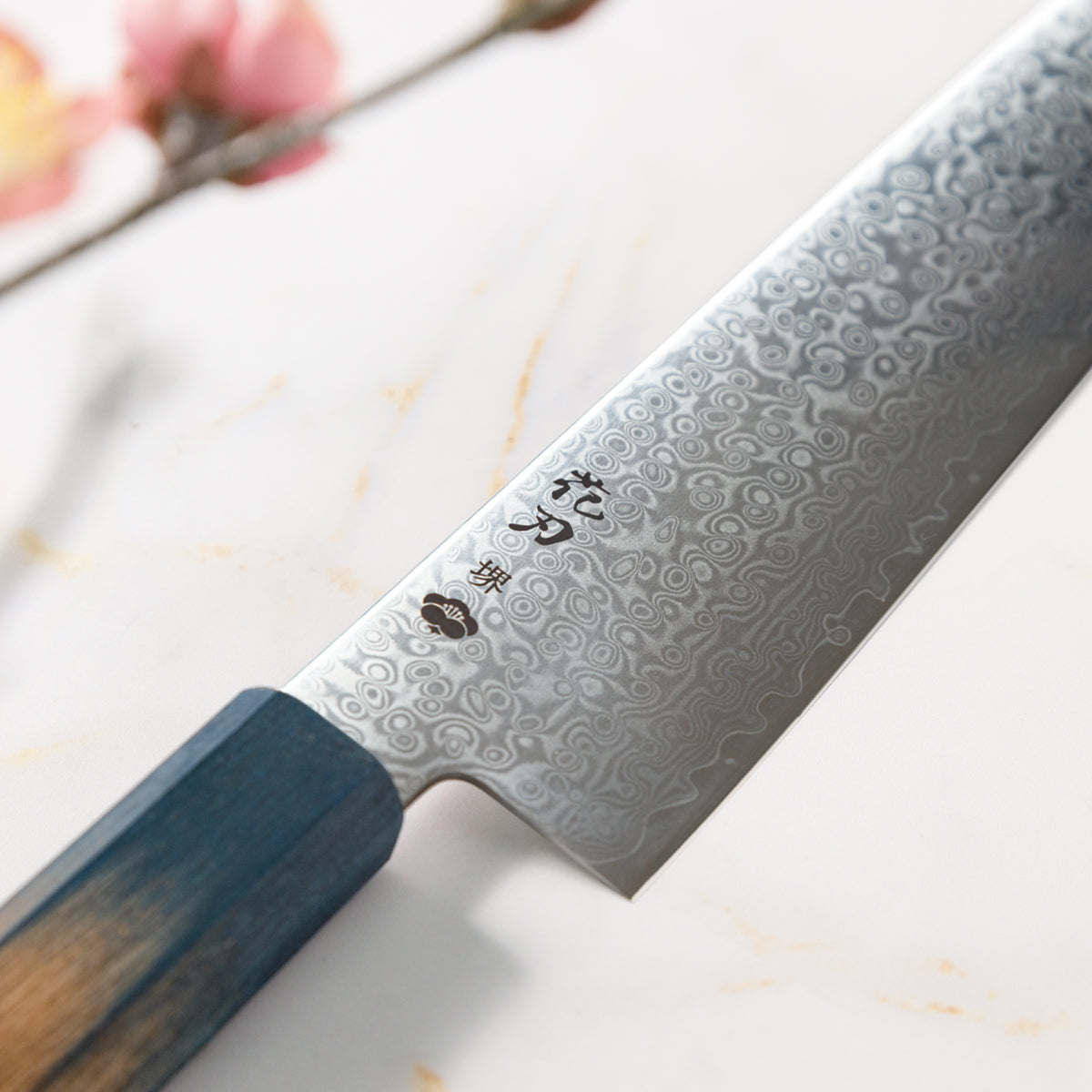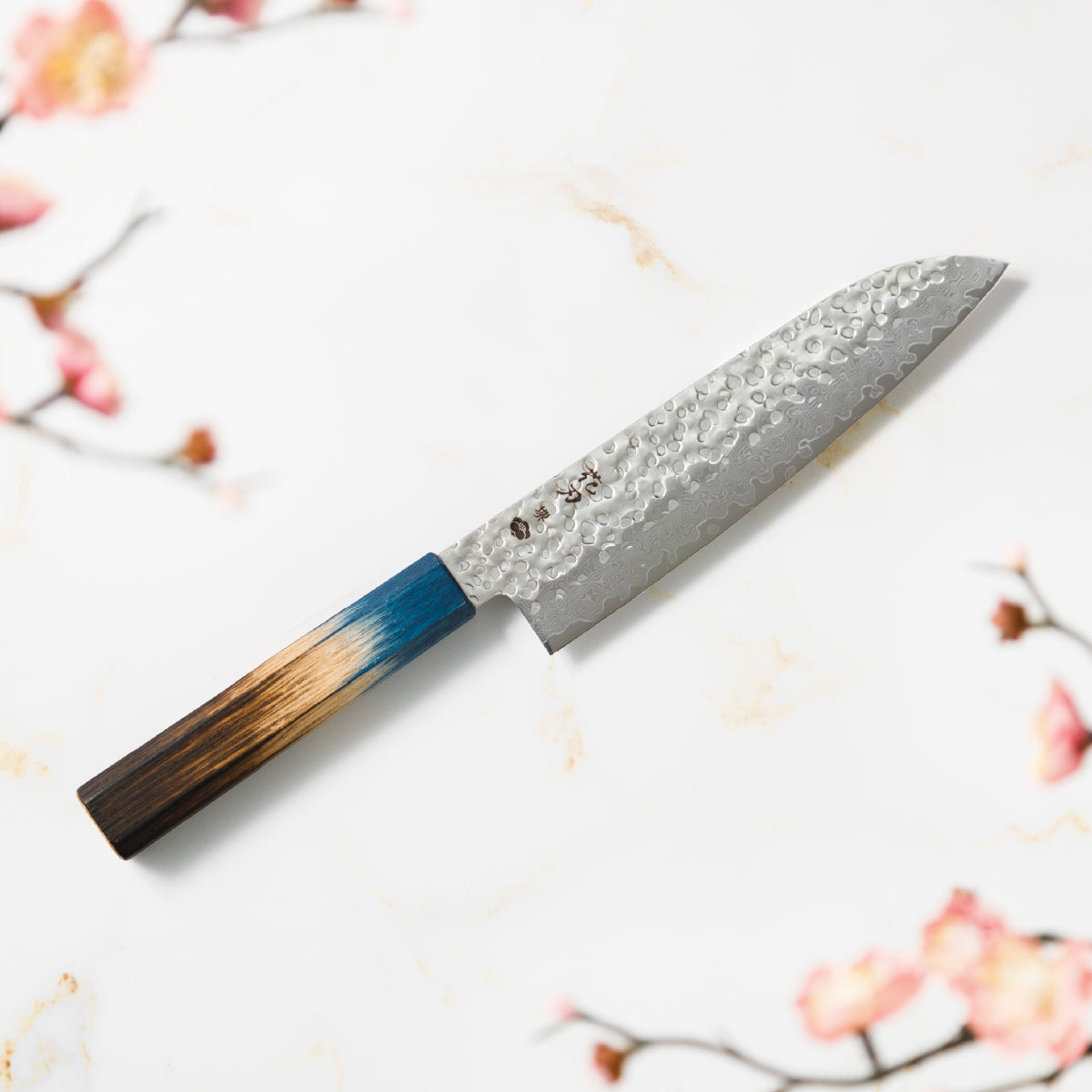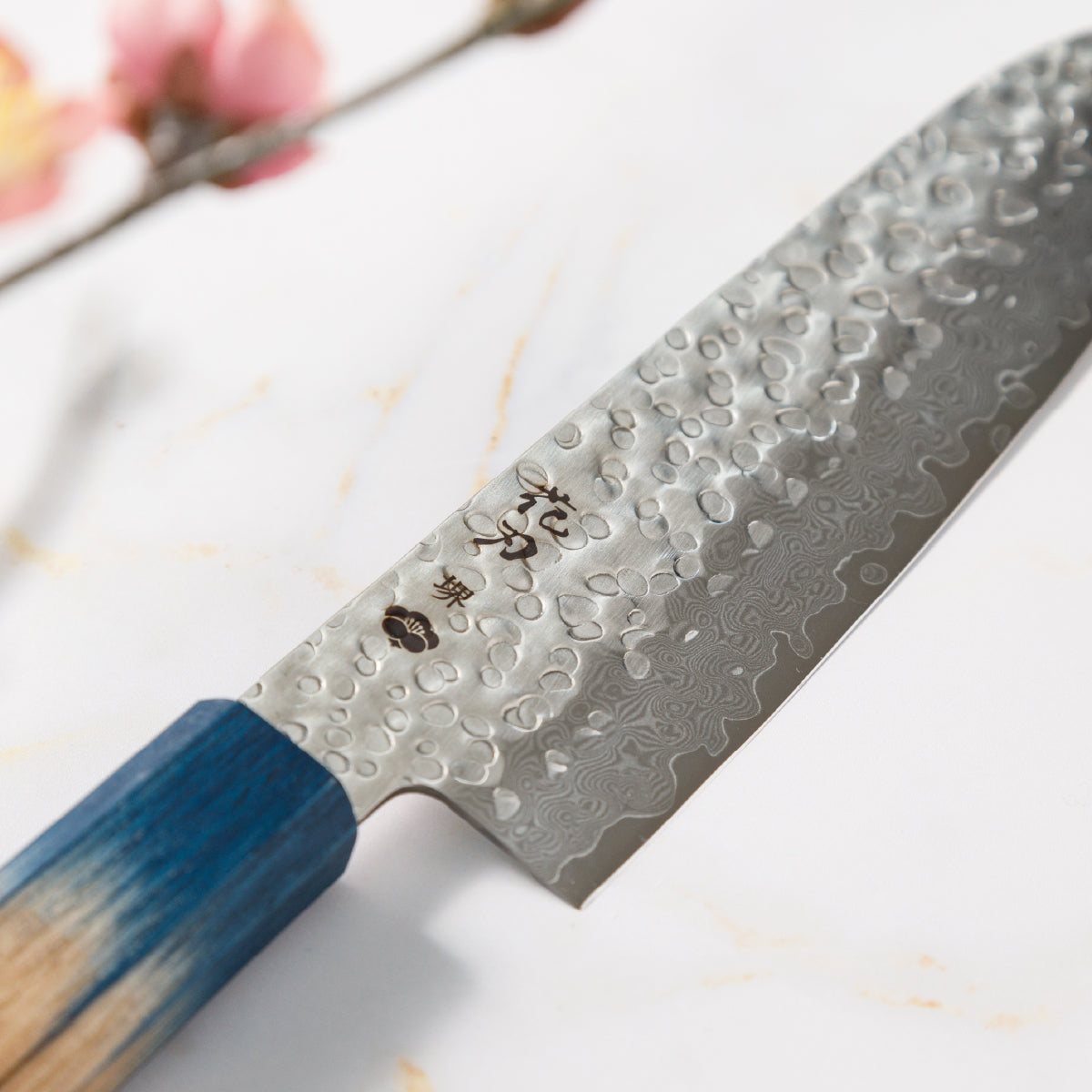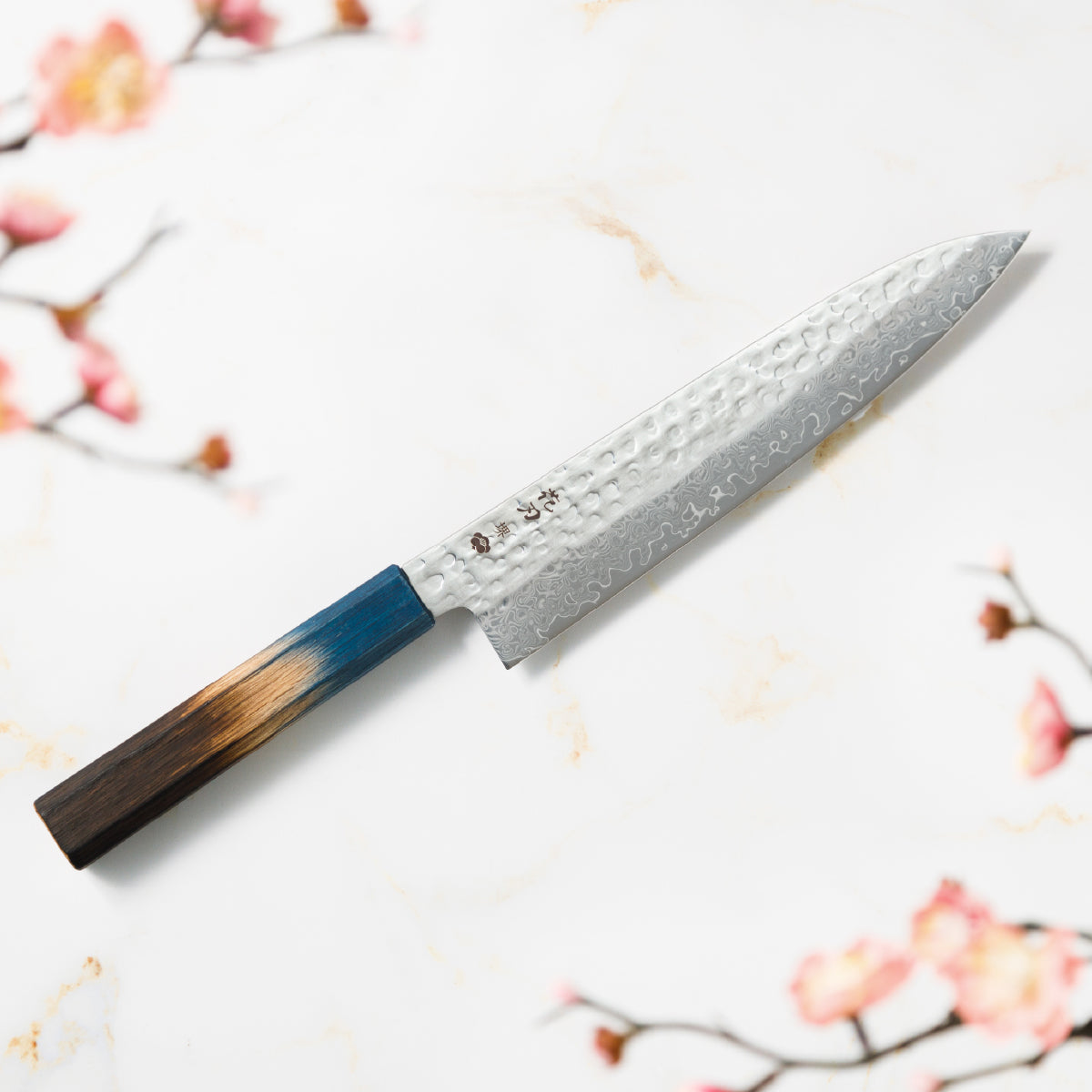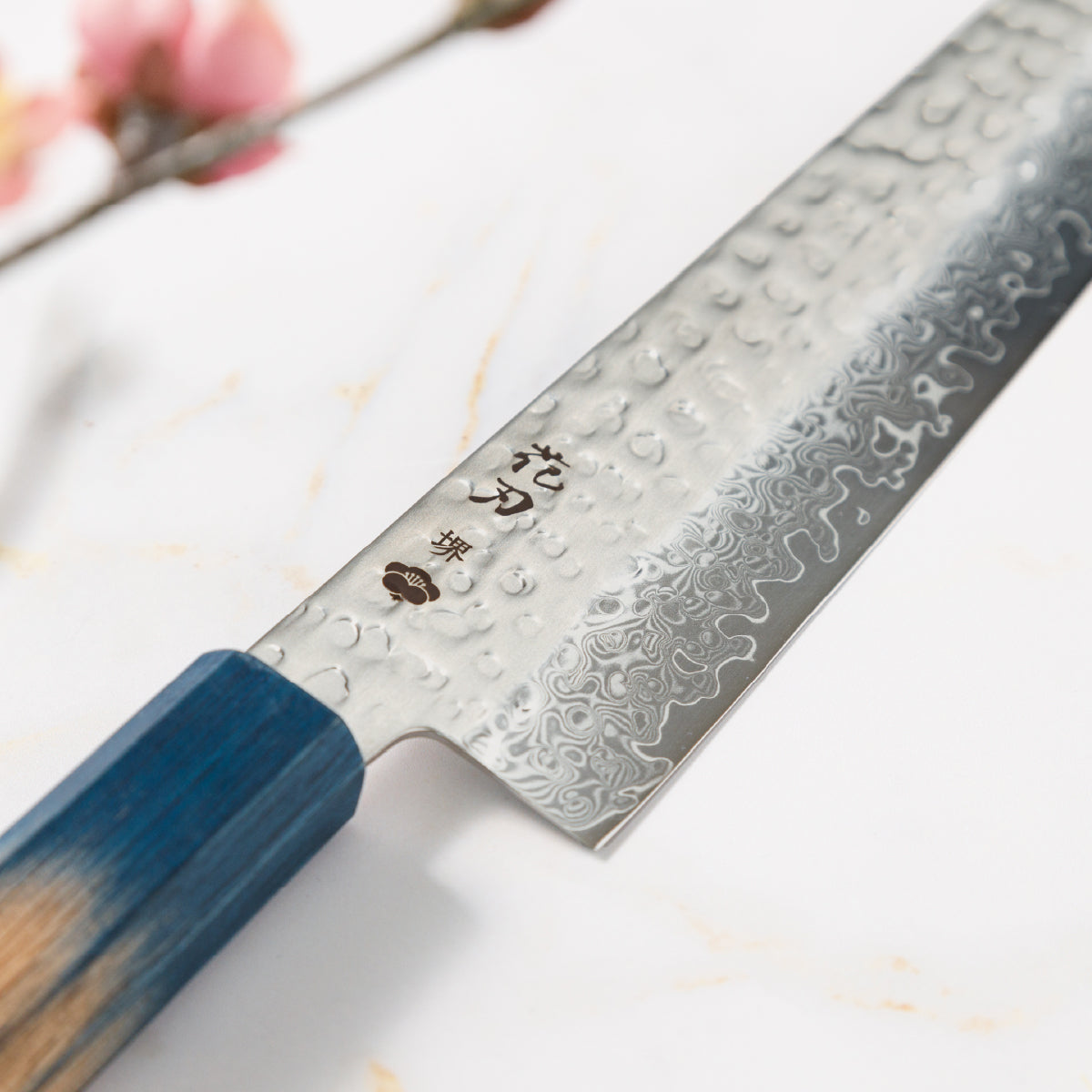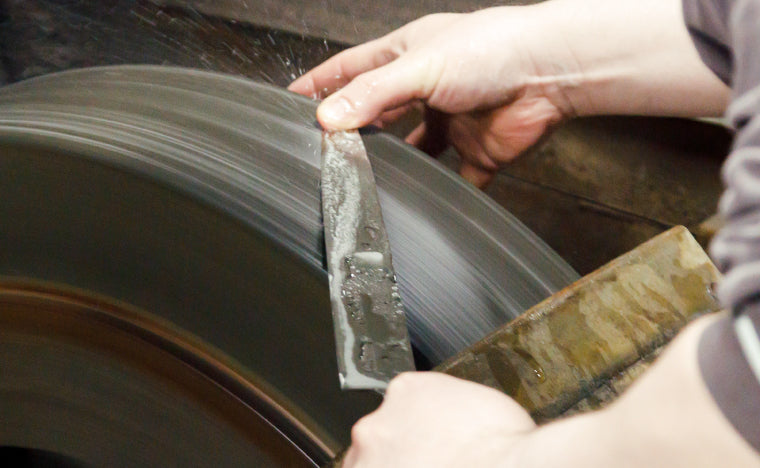
Gyuto vs Santoku: Choosing the Right Japanese Knife
Japanese Knives
If you’re shopping for a Japanese knife, you’ve probably come across the terms Gyuto and Santoku. These two styles are staples in Japanese kitchens—and they’re quickly gaining popularity with home cooks and chefs around the world.
But what is a Gyuto Japanese knife? How does it differ from the Santoku? Most importantly, which type should you choose?
Gyuto vs. Santoku: A Quick Overview
At first glance, the Gyuto and Santoku look similar—but those small differences can really add up.
The Gyuto is typically longer—sometimes by as much as 80mm—and features a gentle curve toward the tip, allowing for a rocking motion when cutting. The Santoku, by contrast, has a flatter edge, making it better suited for quick, straight up-and-down chops.
Both are versatile and can handle most kitchen tasks, but their shapes lend themselves to different cutting styles and ingredients. In the end, the right choice depends on your cooking habits and preferences.
Features of a Gyuto
When it comes down to it, the Gyuto is essentially Japan’s answer to the Western chef’s knife.
Compared to its Western counterpart, a Gyuto is much harder and thinner—thanks to its high-carbon steel and acute edge angle. This brings both advantages and trade-offs.
With the Gyuto’s steel profile, it stays sharper longer, is easier to hone, and handles delicate cuts with finesse—ideal for precise cuts or fileting fish.
However, the thin blade and lighter weight make it less suited to heavy duty kitchen tasks. Chopping through bone or smashing garlic is not recommended.
Still, it remains an excellent multi-purpose blade—perfect for cooks who want a bit more finesse in the kitchen.
| Gyuto Specifications Breakdown |
-
Length: Typically 240mm (range: 180–300mm)
-
Form Factor: Longer blade offers more cutting length and versatility
-
Blade Angle: 12–15 degrees
-
Bevel: Double-bevel
-
Best For: Boneless meats, vegetables, fish, herbs
-
Maintenance: Easy to sharpen, excellent edge retention
-
Weight: Thin and lightweight, reducing fatigue during extended use
-
Overall: A reliable, all-purpose knife suited for a wide range of home cooking tasks
Features of a Santoku
The Santoku combines elements of a chef’s knife and the Japanese Nakiri cleaver—and it’s a staple in nearly every Japanese kitchen.
Literally meaning the 3 virtues of chopping, slicing, and dicing, it is a knife that excels in most home cooking tasks.
The blade's edge is nearly flat, making it perfect for precise chopping or push-cut slicing. The tall blade form is also great for scooping up chopped ingredients!
That flat profile does have a trade-off—it’s not suited for rocking cuts, which are common in Western techniques.
Compact and versatile, the Santoku is perfect for small kitchens, smaller hands, or anyone with limited drawer space.
| Santoku Specifications Breakdown |
-
Length: Typically 165mm (range: 130–200mm)
-
Form Factor: Shorter length is ideal for small kitchens and hands
-
Blade Angle: 12–15 degrees
-
Bevel: Often single-bevel, but double-bevel versions are also common
-
Best For: Boneless meats, vegetables, fish
-
Maintenance: Easy to sharpen, excellent edge retention
-
Weight: Lightweight design reduces hand fatigue
-
Overall: A versatile, beginner-friendly knife for everyday home cooking
What to Choose: Two Scenarios?
You live in an apartment or house with a small kitchen—counter space is limited and your sink, modest. You don’t have time, or are unwilling, to break down whole meats—you usually purchase boneless or pre-cut. You value efficiency in the kitchen—no wasted space, no wasted motion. If this sounds like you—go with the Santoku.
Your kitchen is perhaps a bit larger than most. You mostly cook western-style dishes, but have recently ventured into Asian cuisine. You want something familiar, but capable of delicate work—like making carrot flowers or sashimi cuts. You enjoy cooking with a full range of techniques—chopping, slicing, rocking, piercing. If this is you—go with the Gyuto.
Still not sure? Here's what we recommend to get you started.
Our Recommendations
If you’re in the market for a great Japanese knife—Gyuto or Santoku—we offer a full range that’s sure to please. Our latest release, Hanaha, is handcrafted by skilled artisans in Sakai, Japan—a knife that’s as impressive in performance as it is in beauty.
We also carry a broad selection of other Japanese knives in various styles and affordable prices. Whichever you choose, you can be confident you’re investing in quality, craftsmanship, and the rich tradition that only Japanese knives can offer.




